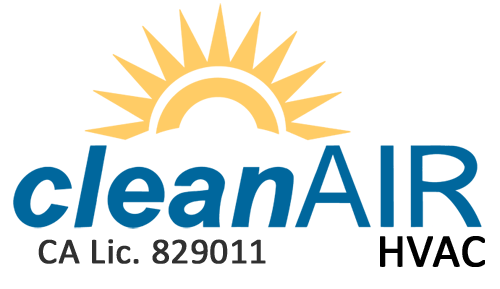
A furnace is usually a background player for your home, keeping you warm across the cold winter months. It frequently doesn’t get noticed until something breaks down.
One root cause could be that your furnace has a cracked heat exchanger. It can be a safety risk, so it’s worthwhile to know the signs of a cracked heat exchanger and what to do if you suspect that may be the problem.
What Is a Heat Exchanger in a Furnace?
A heat exchanger transfers heat from the combustion chamber of your furnace to the air that moves through the air ducts. It usually does this through coils or tubes that warm the air while serving as a barrier to keep the gasses produced in the combustion chamber, called flue gasses, from getting out into your home.
Is a Cracked Heat Exchanger Dangerous?
Given its important role, it’s no surprise that a cracked heat exchanger can be hazardous. A crack in the heat exchanger can allow dangerous gasses – such as carbon monoxide, which can be lethal – to flow through your home.
For obvious reasons, never use your heater if you think there's a crack in the heat exchanger, as letting it run could make your entire family sick. Reach out to an HVAC professional as soon as possible if you are worried your furnace has a cracked heat exchanger that needs repair.
Four Warning Signs of a Cracked Heat Exchanger:
- Furnace turns off: Cracks in the heat exchanger could cause your furnace to switch off.
- Strange Smells: If the air leaving your furnace has a powerful chemical scent, it may be an indicator that gasses are slipping through cracks in your heat exchanger. These gasses, which may smell like formaldehyde, are a major warning sign.
- Carbon monoxide alarm is triggered or you feel symptoms of poisoning: If a cracked heat exchanger is emitting carbon monoxide into your home, your carbon monoxide alarm should go off or household members may struggle with signs of carbon monoxide poisoning. Side effects include headaches, dizziness, weakness, nausea, vomiting or feeling tired. If the alarm goes off or you feel unusually tired, get out of the home right away and then call for help.
- Soot: If you notice black sooty buildup near the exterior of your furnace, it’s more evidence something could be seriously wrong.
What to Do if a Furnace Heat Exchanger is Cracked
If you believe your furnace has a cracked heat exchanger, contact a pro with extensive experience in furnace installation Pacheco as soon as possible so they can examine your system and, if necessary, start a furnace heat exchanger replacement. Costs should vary depending on the situation, but estimates often hover around $1,000 to $3,000.
However, the good news is that heat exchangers are regularly protected by the warranty. You should check the warranty paperwork on your furnace, as while the warranty may not cover the entire cost of repairs, it still may significantly lower your bill.
How to Prevent a Cracked Heat Exchanger in Your Home
One of the easiest ways to prevent a problem in your furnace overall is with routine furnace maintenance. Furnaces provide the best possible return on investment when they work efficiently. Hiring a trained professional to examine your furnace for old parts, dirty filters and other potential problems can help you avoid getting a big bill later on.
It’s also beneficial to inspect your furnace filters every few months – it’s recommended some filters be replaced every 90 days or sooner if they are dirty or grimy. While the filters aren't a part of the heat exchanger itself, the strain of pulling air through a clogged filter makes your entire furnace work more vigorously to accomplish its job. And the harder your furnace has to work, the more deterioration parts like the heat exchanger will endure.


